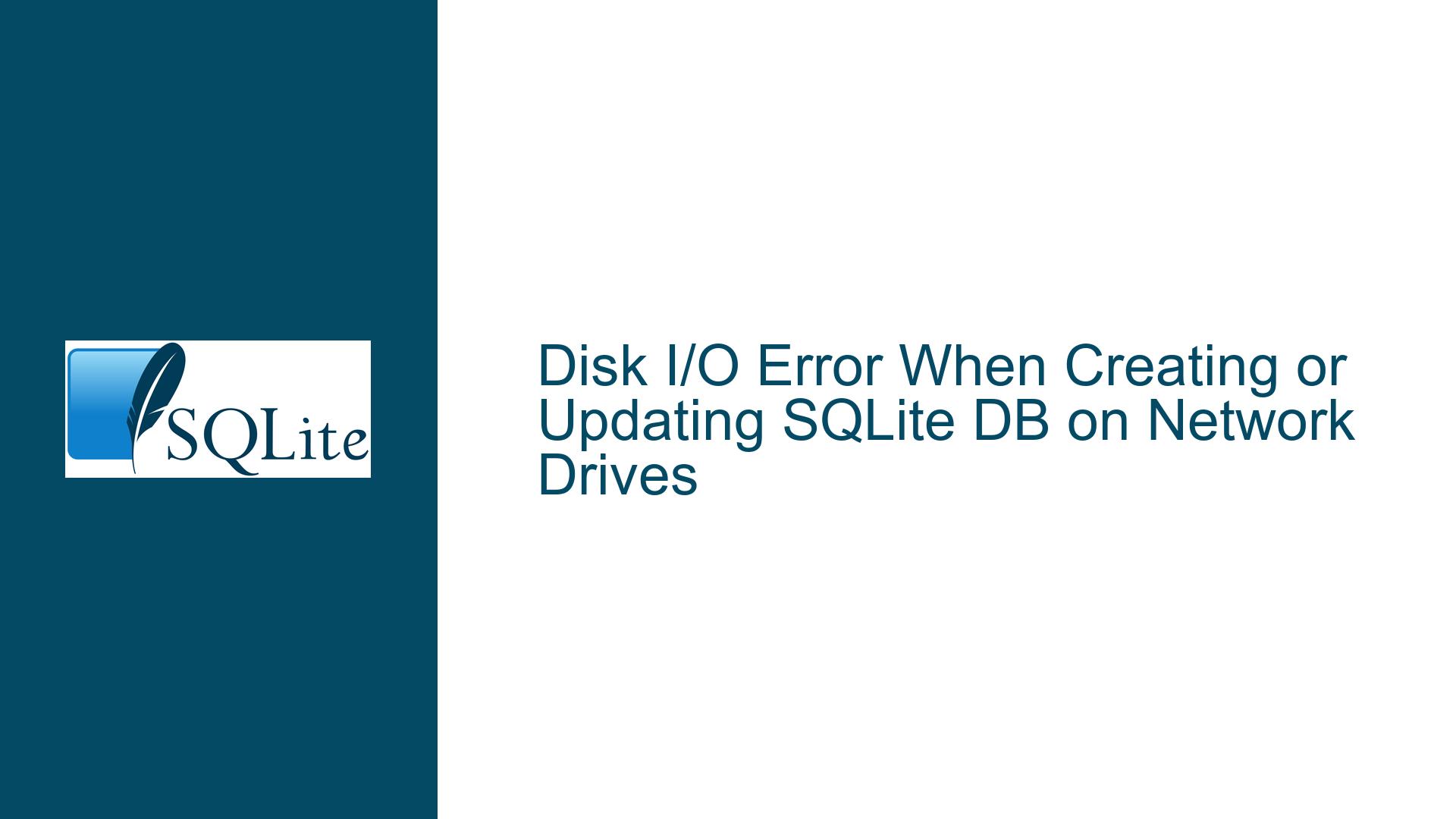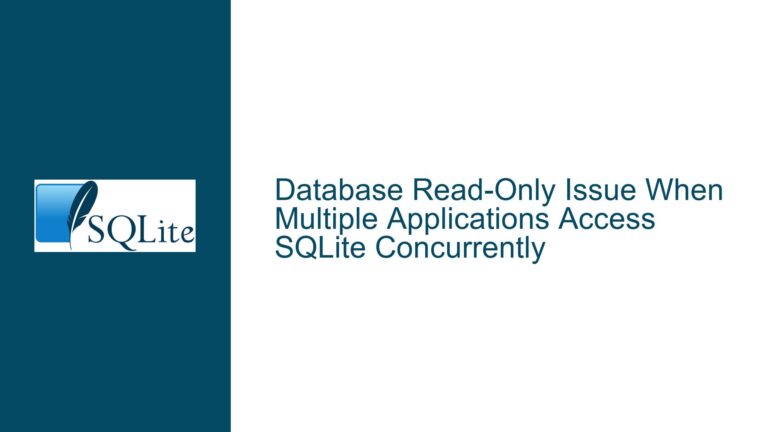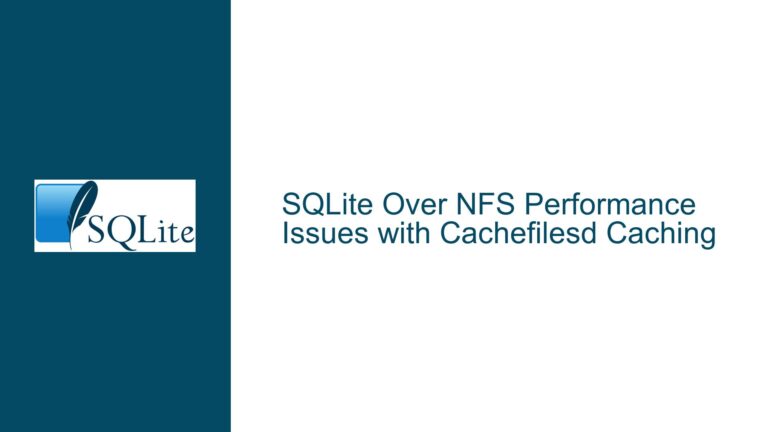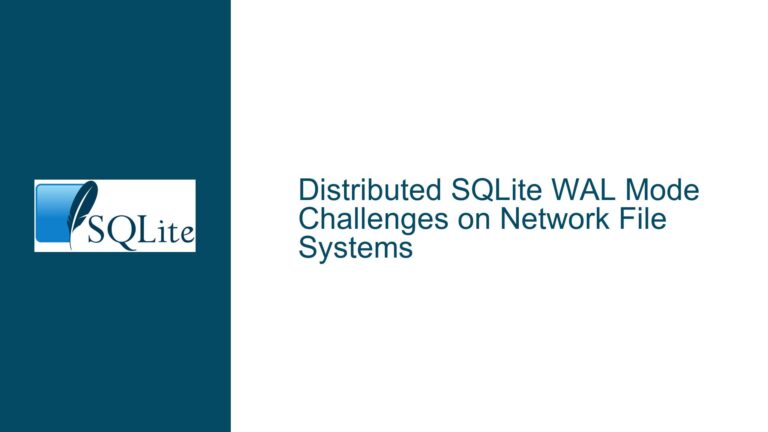Disk I/O Error When Creating or Updating SQLite DB on Network Drives
Disk I/O Error During SQLite Database Creation on Network Drives
When attempting to create or update an SQLite database on a network-mounted drive, users may encounter a disk I/O error, specifically an OperationalError('disk I/O error') with a system error number of 22. This error occurs despite correct permissions and successful access to the network drive via other scripts or applications. The issue is isolated to SQLite operations, where the database file is created but remains empty or corrupted, failing to store any tables or records. This problem is particularly prevalent when using SQLite on a Raspberry Pi running Debian, with the network drive mounted via /etc/fstab.
The error manifests during the initial creation of the database file, where SQLite attempts to read from the file immediately after creating it. This behavior, while standard for SQLite’s file handling, can trigger an EIO (Input/output error) on certain network file systems. The error suggests a fundamental incompatibility between SQLite’s file access patterns and the network file system’s handling of file locks and I/O operations.
Network File System Limitations and SQLite File Locking Mechanisms
The core issue stems from the inherent limitations of network file systems, particularly in their handling of file locks and I/O operations. SQLite relies heavily on file locking to ensure data integrity, especially in multi-process or multi-threaded environments. On local file systems, these locks are managed efficiently by the operating system. However, network file systems often implement file locking in ways that are either unreliable or incompatible with SQLite’s expectations.
When SQLite creates a new database file, it performs a series of operations: checking if the file exists, creating the file if it does not, and then attempting to read the first 100 bytes of the file. This read operation is intended to verify the file’s integrity and ensure that no other process has modified it. On network file systems, this read operation can fail with an EIO error, indicating a fundamental issue with the file system’s ability to handle concurrent access or its implementation of the pread64 system call.
The problem is exacerbated by the fact that SQLite does not explicitly request file locks during the initial read operation. Instead, it assumes that the file system will handle concurrent access gracefully. This assumption holds true for local file systems but often fails on network file systems, where file locks may be lost or ignored due to network latency, packet loss, or other transport-layer issues.
Troubleshooting Steps, Solutions, and Fixes for Network Drive SQLite Issues
To resolve the disk I/O error when creating or updating SQLite databases on network drives, consider the following steps and solutions:
1. Verify Network File System Configuration:
Ensure that the network drive is mounted with the correct options in /etc/fstab. For example, using the nfs or cifs protocol with appropriate locking mechanisms can improve compatibility. Avoid using protocols or configurations that do not support reliable file locking.
2. Use a Local Cache or Proxy:
Instead of directly accessing the network drive, use a local cache or proxy to handle SQLite operations. For example, you can create the database locally and then synchronize it with the network drive using a script or tool like rsync. This approach reduces the likelihood of I/O errors by minimizing direct interaction with the network file system.
3. Modify SQLite’s File Handling Behavior:
SQLite’s behavior can be customized by implementing a custom VFS (Virtual File System) layer. This layer can intercept file operations and handle them in a way that is compatible with the network file system. For example, you can defer the initial read operation until after the file locks have been acquired.
4. Switch to a More Robust Database System:
If the network drive is a critical component of your infrastructure, consider using a database system that is designed for network environments, such as PostgreSQL or MySQL. These systems have built-in support for network file systems and are less likely to encounter I/O errors.
5. Monitor and Debug File System Operations:
Use tools like strace to monitor the system calls made by SQLite and identify the exact point of failure. This information can help you pinpoint the root cause of the I/O error and develop a targeted solution.
6. Regularly Backup the Database:
Regardless of the file system or database system used, always maintain regular backups of your database. This practice ensures that you can recover from corruption or data loss caused by network file system issues.
By following these steps, you can mitigate the risks associated with using SQLite on network drives and ensure the integrity and reliability of your database operations.






